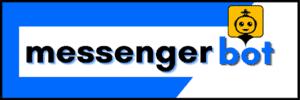Key Takeaways
- Understand the key components of chatbots, including Natural Language Processing (NLP), machine learning, and user interface design for effective user interaction.
- Follow a structured approach to creating a chatbot: define its purpose, choose the right platform, and design an intuitive conversation flow.
- Utilize Chatterbot in Python for easy chatbot training, leveraging example conversations to enhance learning and responsiveness.
- Regularly test your chatbot and gather user feedback to continuously improve performance and user engagement.
- Explore different types of chatbots, such as AI-powered and voice chatbots, to choose the best fit for your business needs.
- Overcome common challenges in chatbot building by starting simple, utilizing analytics, and leveraging existing resources for guidance.
- Access valuable resources, including downloadable chatbot tutorial PDFs and GitHub projects, to enhance your learning and development process.
Welcome to our comprehensive chatbot tutorial, where we will guide you through the fascinating world of chatbots, focusing on how to create, teach, and understand them using Python and the Rasa framework. Whether you’re a beginner wondering how do I make my own chatbot? or an experienced developer looking to enhance your skills, this guide is tailored for you. We will explore the basics of chatbots, including what they are and their key components, before diving into practical applications like using Chatterbot for training your chatbot effectively. Additionally, we will discuss the different types of chatbots, the challenges you may face in chatbot building, and how to overcome them. By the end of this tutorial, you’ll not only have a solid understanding of creating a chatbot but also access to valuable resources to further your learning. Get ready to embark on your journey to mastering chatbots!
How do I make my own chatbot?
Understanding the Basics of Chatbots
Creating your own chatbot involves several key steps that ensure it effectively meets user needs and functions smoothly. Here’s a comprehensive guide to help you through the process:
- Define the Purpose of Your Chatbot:
- Identify the specific problem your chatbot will address, such as customer support, lead generation, or information delivery.
- Determine the tasks it will perform, like answering FAQs, booking appointments, or providing product recommendations.
- Understand your target audience to tailor the chatbot’s responses and functionalities accordingly.
- Choose the Right Development Platform:
- No-Code Platforms: These are ideal for beginners and allow you to create chatbots using visual interfaces. Popular options include Tidio, Landbot, and Jotform AI Agents.
- Low-Code Platforms: These provide more customization options while still being user-friendly. Examples include Chatfuel and ManyChat.
- Code-Based Platforms: For those with programming skills, platforms like Dialogflow, Microsoft Bot Framework, and IBM Watson offer extensive flexibility and capabilities.
- Design the Conversation Flow:
- Map out potential user interactions and create decision trees to guide users through various scenarios.
- Anticipate user input, including common errors and unexpected questions, to enhance the chatbot’s responsiveness.
- User Interface (UI) Design:
- Ensure the chatbot interface is intuitive and user-friendly. Consider the visual elements and how users will interact with the bot.
- Training Your Chatbot:
- For no-code platforms, provide example conversations or training phrases to help the chatbot learn.
- For code-based platforms, consider using large language models (LLMs) like GPT-3 or BERT. Fine-tune these models with your specific data to improve accuracy. Tools like Hugging Face and OpenAI can assist in model training and deployment.
- Testing and Feedback:
- Conduct thorough testing to ensure the chatbot operates as intended.
- Gather user feedback to identify areas for improvement and refine the chatbot’s performance continuously.
- Monitoring and Maintenance:
- Regularly monitor the chatbot’s performance metrics, such as user engagement and satisfaction rates.
- Make necessary adjustments based on user interactions and feedback to enhance functionality over time.
- Integration and Deployment:
- Choose the appropriate channels for your chatbot, such as your website, messaging apps, or social media platforms.
- Integrate the chatbot with your chosen platform to make it accessible to users.
By following these steps, you can create a functional and effective chatbot that meets the needs of your audience while leveraging the latest technologies and methodologies in chatbot development. For further reading, refer to resources from reputable sources like the Journal of Artificial Intelligence Research and industry blogs such as Chatbots Magazine.
Key Components of a Chatbot
Understanding the key components of a chatbot is essential for successful chatbot building. Here are the fundamental elements:
- Natural Language Processing (NLP): This technology enables the chatbot to understand and interpret user input, allowing for more human-like interactions.
- Backend Integration: A robust backend is crucial for managing data, user interactions, and integrating with other systems, such as CRM or e-commerce platforms.
- Machine Learning: Implementing machine learning algorithms helps the chatbot learn from interactions and improve its responses over time.
- User Interface (UI): A well-designed UI enhances user experience, making it easy for users to interact with the chatbot.
- Analytics and Reporting: Monitoring user interactions and performance metrics is vital for continuous improvement and optimization of the chatbot.
By focusing on these components, you can ensure that your chatbot is not only functional but also capable of providing meaningful interactions that enhance user engagement. For more insights, check out our Messenger bot tutorials.

Teaching Your Chatbot with Chatterbot
To effectively teach a chatbot, follow these comprehensive steps:
- Determine Chatbot Use Cases: Identify specific scenarios where the chatbot will be utilized, such as customer support, lead generation, or information retrieval. This helps in tailoring the chatbot’s responses to meet user needs effectively.
- Define User Intent: Clearly outline what users are likely to ask and the intent behind their queries. Understanding user intent is crucial for creating relevant and accurate responses.
- Analyze Conversation History: Review past interactions to identify common questions and issues. This data can provide insights into user behavior and preferences, allowing for better training of the chatbot.
- Generate Variations of User Queries: Create diverse examples of how users might phrase their questions. This helps the chatbot recognize different ways of asking the same thing, improving its ability to respond accurately.
- Ensure Keyword Matching: Incorporate relevant keywords that align with user intent. This not only aids in understanding but also enhances the chatbot’s ability to retrieve the correct information.
- Train Team Members: Educate your team on the chatbot’s functionalities and training processes. A well-informed team can contribute valuable insights and help refine the chatbot’s performance.
- Give Your Chatbot a Personality: Develop a consistent tone and personality for the chatbot that aligns with your brand. This can enhance user engagement and satisfaction.
- Regularly Revise and Improve: Continuously monitor chatbot interactions and gather user feedback. Use this information to make iterative improvements, ensuring the chatbot evolves with user needs and expectations.
For further reading on chatbot training methodologies, consider resources from the Stanford University Natural Language Processing Group and industry insights from platforms like Chatbot Magazine.
How to Use Chatterbot for Training
Using Chatterbot for training your chatbot is a straightforward process that can significantly enhance its capabilities. Here’s a brief overview of how to get started:
- Install Chatterbot: Begin by installing Chatterbot in your Python environment. This can be done easily using pip, which allows you to manage packages in Python.
- Set Up Your Chatterbot Instance: Create an instance of Chatterbot and configure it according to your needs. You can choose different storage adapters and logic adapters to customize its behavior.
- Train Your Chatbot: Use the Chatterbot training methods to feed it data. You can utilize pre-existing datasets or create your own Chatterbot examples to ensure it learns effectively.
- Test Your Chatbot: After training, conduct tests to evaluate how well the chatbot responds to various queries. This will help you identify areas for improvement.
- Iterate and Improve: Based on testing feedback, continue to refine the training data and logic until your chatbot meets the desired performance standards.
For more detailed instructions, check out the Messenger bot tutorials that guide you through the process of using Chatterbot effectively.
Fundamentals of Building a Chatbot
Creating a chatbot can seem daunting, but with the right guidance, it becomes an engaging and rewarding process. In this section, we will explore a comprehensive chatbot tutorial for beginners that will help you understand the essential steps involved in building a chatbot from scratch.
Chatbot Tutorial for Beginners
A chatbot is an advanced computer program designed to simulate human conversation with users through text or voice interactions. To start your journey in creating a chatbot, you need to grasp the fundamental concepts:
- Define the Purpose: Determine what you want your chatbot to achieve. Whether it’s for customer support, lead generation, or providing information, having a clear goal will guide your development process.
- Select the Right Tools: Choose a platform that suits your needs. For instance, Brain Pod AI offers various AI solutions, including chatbots that can enhance your digital communication.
- Design the Conversation Flow: Map out how interactions will occur. This includes anticipating user questions and planning responses, which is crucial for effective engagement.
- Implement Natural Language Processing (NLP): Utilize NLP technologies to make your chatbot understand and respond to user queries more naturally. This is essential for creating a seamless user experience.
For a hands-on approach, consider following a step-by-step guide that walks you through the setup process, ensuring you cover all necessary aspects of chatbot building.
Creating a Chatbot: Step-by-Step Guide
To effectively make a chatbot, follow these steps:
- Choose a Framework: Select a framework that fits your technical skills. For example, Chatterbot in Python is a popular choice for beginners due to its simplicity and extensive documentation.
- Set Up Your Development Environment: Install the necessary software and libraries. If you’re using Chatterbot, ensure you have Python installed along with the Chatterbot library.
- Train Your Chatbot: Use the Chatterbot trainer to feed your chatbot data. This involves providing it with examples of conversations to learn from, enhancing its ability to respond accurately.
- Test and Iterate: After building your chatbot, conduct thorough testing to identify areas for improvement. Gather user feedback and make adjustments to enhance performance.
By following this chatbot tutorial, you will be well on your way to successfully building a chatbot that meets your needs and engages users effectively.
Exploring Different Types of Chatbots
Understanding the various types of chatbots is essential for anyone looking to create a chatbot that meets specific needs. Each type serves distinct purposes and functionalities, allowing businesses to choose the right solution for their customer engagement strategies. Here are the four primary types of chatbots:
- Menu or Button-Based Chatbots: These are the simplest form of chatbots, allowing users to interact through predefined options. Users select from a menu of buttons or choices, making it easy to navigate common queries without complex interactions. They are often used in customer service settings for straightforward tasks.
- Rule-Based Chatbots: Also known as decision-tree chatbots, these operate based on a set of predefined rules and scripts. They can handle more complex interactions than menu-based bots by following a logical flow of questions and answers. However, their capabilities are limited to the scenarios they are programmed for, making them less flexible.
- AI-Powered Chatbots: These chatbots utilize artificial intelligence and natural language processing (NLP) to understand and respond to user inquiries more dynamically. They learn from interactions and can provide personalized responses, making them suitable for more complex customer service tasks. AI-powered chatbots can analyze user intent and context, improving the overall user experience.
- Voice Chatbots: Designed for voice interaction, these chatbots use speech recognition technology to understand spoken commands. They are commonly found in virtual assistants like Amazon’s Alexa or Google Assistant, allowing users to engage in hands-free conversations. Voice chatbots are increasingly popular in smart home devices and customer service applications.
Rule-Based vs. AI-Based Chatbots
When deciding between rule-based and AI-based chatbots, it’s crucial to consider the specific needs of your business. Rule-based chatbots are straightforward and effective for handling common inquiries, while AI-based chatbots offer a more sophisticated approach, capable of learning and adapting over time. For businesses looking to enhance user engagement, AI-powered chatbots can provide a more personalized experience, making them a valuable investment.
Use Cases for Each Type of Chatbot
Each type of chatbot has unique use cases that can benefit different industries:
- Menu or Button-Based Chatbots: Ideal for FAQs and simple customer service inquiries, these bots streamline interactions and reduce response times.
- Rule-Based Chatbots: Best suited for scenarios where specific workflows are needed, such as booking appointments or processing orders.
- AI-Powered Chatbots: Perfect for businesses that require complex customer interactions, such as e-commerce platforms that need to provide personalized shopping experiences.
- Voice Chatbots: Useful in environments where hands-free interaction is beneficial, such as in smart home devices or automotive applications.
By understanding these different types of chatbots, you can make informed decisions on how to create a chatbot that effectively meets your business needs. For more insights on chatbot development, check out our Messenger bot tutorials.

Challenges in Chatbot Development
Creating a chatbot can be a rewarding endeavor, but it also comes with its own set of challenges. Understanding these obstacles is crucial for anyone looking to build an effective chatbot. Here are some common difficulties faced during the chatbot building process:
- Understanding User Intent: One of the primary challenges in chatbot development is accurately interpreting user intent. Users may phrase their questions in various ways, making it essential for the chatbot to understand context and nuances in language.
- Technical Complexity: While there are no-code platforms available, developing a sophisticated chatbot often requires programming knowledge, especially when using frameworks like Rasa or Microsoft Bot Framework. This can be a barrier for those without a technical background.
- Integration Issues: Ensuring that your chatbot integrates seamlessly with existing systems and platforms can be challenging. Compatibility with various messaging services, such as Facebook Messenger or SMS, requires careful planning and execution.
- Maintaining Engagement: Keeping users engaged is vital for a successful chatbot. If the bot fails to provide relevant responses or becomes repetitive, users may lose interest quickly.
Tips for Overcoming Difficulties in Chatbot Building
To navigate the challenges of chatbot development effectively, consider the following tips:
- Utilize User Feedback: Regularly gather feedback from users to understand their experiences and expectations. This can help you refine the chatbot’s responses and improve overall user satisfaction.
- Start Simple: Begin with a basic version of your chatbot to test its functionality and gather insights. As you gain confidence and understanding, gradually add more complex features.
- Leverage Existing Resources: Take advantage of available chatbot tutorials and documentation from platforms like Brain Pod AI to enhance your knowledge and skills.
- Implement Analytics: Use analytics tools to monitor chatbot performance and user interactions. This data can provide valuable insights into areas for improvement and help you make informed decisions.
Chatbot Tutorial Resources
When diving into the world of chatbots, having the right resources at your fingertips can make all the difference. Whether you’re a beginner or looking to enhance your skills, a comprehensive chatbot tutorial can guide you through the intricacies of creating a chatbot. Below, I’ll highlight some valuable resources that can help you on your journey.
Chatbot Tutorial PDF: Where to Find It
For those who prefer offline learning, a chatbot tutorial PDF can be an excellent resource. You can find various downloadable guides that cover everything from the basics of chatbots in Python to advanced techniques using frameworks like Rasa. Websites such as Messenger Bot Tutorials offer free resources that you can easily access and download. These PDFs often include step-by-step instructions, code snippets, and practical examples, making it easier to follow along.
Free Chatbot Tutorial and GitHub Resources
GitHub is a treasure trove for developers looking to explore chatbots tutorials. Many developers share their chatterbot code and projects, allowing you to learn from real-world examples. You can find repositories that provide chatterbot examples, complete with documentation on how to use Chatterbot in Python. Additionally, platforms like Brain Pod AI offer AI chat assistant solutions that can enhance your understanding of chatbot functionalities. By leveraging these resources, you can gain hands-on experience in chatbot building and improve your skills effectively.
Chatbot Tutorial Resources
When embarking on the journey of creating a chatbot, having access to the right resources can significantly enhance your learning experience and streamline the development process. Here, I’ll outline where to find comprehensive chatbot tutorials and additional materials that can aid you in building effective chatbots.
Chatbot tutorial PDF: Where to find it
For those who prefer structured learning, a chatbot tutorial PDF can be an invaluable resource. These documents often provide step-by-step instructions, examples, and best practices for building a chatbot. You can find various PDFs online, including those from educational platforms and tech blogs. Websites like Messenger Bot Tutorials offer downloadable resources that cover everything from basic concepts to advanced techniques in chatbot development.
Free chatbot tutorial and GitHub resources
GitHub is a treasure trove for developers looking for free chatbot tutorials and code examples. Many developers share their chatterbot code and projects, allowing you to learn from real-world applications. You can explore repositories that focus on chatterbot in Python or even specific frameworks like Rasa. Additionally, platforms like Brain Pod AI provide tutorials and demos that can help you understand how to implement AI-driven chatbots effectively. Utilizing these resources will not only enhance your skills but also provide practical insights into making a chatbot that meets user needs.





